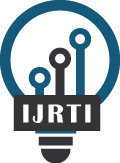|
International Journal for Research Trends and Innovation
International Peer Reviewed & Refereed Journals, Open Access Journal
ISSN Approved Journal No: 2456-3315 | Impact factor: 8.14 | ESTD Year: 2016
Scholarly open access journals, Peer-reviewed, and Refereed Journals, Impact factor 8.14 (Calculate by google scholar and Semantic Scholar | AI-Powered Research Tool) , Multidisciplinary, Monthly, Indexing in all major database & Metadata, Citation Generator, Digital Object Identifier(DOI)
|
Issue: November 2025
Volume 10 | Issue 11
Review Result and Publication of Paper within : 2-3 days
Click Here For more DetailsFor Authors
Forms / Download
Published Issue Details
Editorial Board
Other IMP Links
Facts & Figure
Impact Factor : 8.14
Issue per Year : 12
Volume Published : 10
Issue Published : 114
Article Submitted : 18499
Article Published : 7841
Total Authors : 20714
Total Reviewer : 756
Total Countries : 142
Indexing Partner
Licence
This work is licensed under a Creative Commons Attribution-NonCommercial 4.0 International License







|
Published Paper Details
|
|
| Paper Title: | Microneedles For Transdermal Drug Delivery |
| Authors Name: | Darshan Murkute , Nishant Thakur |
| Download E-Certificate: | Download |
| Author Reg. ID: |
IJRTI_186250
|
| Published Paper Id: | IJRTI2304202 |
| Published In: | Volume 8 Issue 4, April-2023 |
| DOI: | |
| Abstract: | The inability of the majority of medicines to permeate the skin at therapeutically effective rates has greatly hindered the success of transdermal drug delivery. Recently, it has been suggested and demonstrated that using micron-scale needles to boost skin permeability will significantly increase transdermal delivery, especially for macromolecules. Using microelectronics tools Industry has produced microneedles in a variety of sizes, shapes, and materials. Most research on medication delivery has highlighted the use of solid microneedles, which have been demonstrated to improve the skin's permeability to a variety of compounds and nanoparticles made in a lab. In vivo experiments have shown that oligonucleotide delivery, insulin's lowering of blood sugar, and the generation of immune responses by protein and DNA vaccines are all possible. To improve transport by diffusion or iontophoresis or to act as drug carriers that release medication into the skin from a microneedle surface coating, needle arrays have been employed in these investigations to puncture holes into the skin. It has been demonstrated that hollow microneedles can microinject insulin into diabetic rats. In order to address practical uses of microneedles, it was discovered that needles with small tip radius and large wall thickness have the best ratio of microneedle fracture force to skin insertion force (i.e. margin of safety). Human volunteers' skin was punctured using microneedles, which were claimed to be painless. These findings taken together imply that microneedles are a promising method for delivering medicinal substances into the skin for a variety of potential uses. |
| Keywords: | Microfabrication, MEMS, Microinjection, Skin mechanics, Pain, Transdermal medication delivery |
| Cite Article: | " Microneedles For Transdermal Drug Delivery", International Journal of Science & Engineering Development Research (www.ijrti.org), ISSN:2455-2631, Vol.8, Issue 4, page no.1235 - 1242, April-2023, Available :http://www.ijrti.org/papers/IJRTI2304202.pdf |
| Downloads: | 000205138 |
| ISSN: |
2456-3315 | IMPACT FACTOR: 8.14 Calculated By Google Scholar| ESTD YEAR: 2016 An International Scholarly Open Access Journal, Peer-Reviewed, Refereed Journal Impact Factor 8.14 Calculate by Google Scholar and Semantic Scholar | AI-Powered Research Tool, Multidisciplinary, Monthly, Multilanguage Journal Indexing in All Major Database & Metadata, Citation Generator |
| Publication Details: |
Published Paper ID: IJRTI2304202
Registration ID:186250
Published In: Volume 8 Issue 4, April-2023
DOI (Digital Object Identifier):
Page No: 1235 - 1242 Country: NASHIK, Maharashtra, India Research Area: Pharmacy Publisher : IJ Publication Published Paper URL : https://www.ijrti.org/viewpaperforall?paper=IJRTI2304202 Published Paper PDF: https://www.ijrti.org/papers/IJRTI2304202 |
| Share Article: | |
|
Click Here to Download This Article |
|
| Article Preview | |
|
|
|
Major Indexing from www.ijrti.org
| Google Scholar | ResearcherID Thomson Reuters | Mendeley : reference manager | Academia.edu |
| arXiv.org : cornell university library | Research Gate | CiteSeerX | DOAJ : Directory of Open Access Journals |
| DRJI | Index Copernicus International | Scribd | DocStoc |
ISSN Details
 |
 |
ISSN: 2456-3315
Impact Factor: 8.14 and ISSN APPROVED,
Journal Starting Year (ESTD) : 2016
DOI (A digital object identifier)
 Providing A digital object identifier by DOI.ONE How to Get DOI? |
Conference
Open Access License Policy
Important Details
Join RMS/Earn 300
WhatsApp
Click Here
Click Here
Indexing Partner |
|||
| Copyright © 2025 - All Rights Reserved - IJRTI | |||






